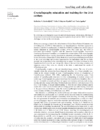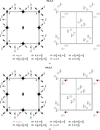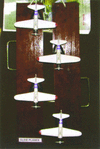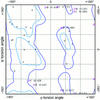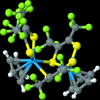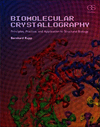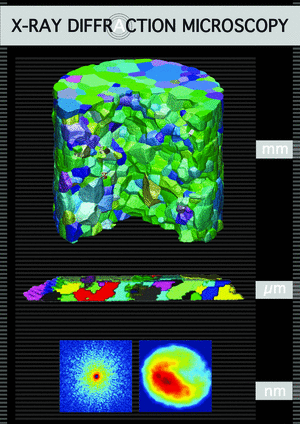issue contents
October 2010 issue
Crystallography education and training for the 21st century

Cover illustration: Aspects of crystallography education and training in the 21st century.
teaching and education
Free 

Free 

Classroom demonstrations, laboratory experiments and homework assignments are suggested that will increase student interest and comprehension in both introductory and advanced physical chemistry courses.
Free 

The concept of the polar lattice introduced by Bravais is reviewed and presented as an intermediate step to introduce the notion of the reciprocal lattice.
Free 

This article explains the international notation system for space-group symmetry, using examples taken from Volume A of International Tables for Crystallography (ITA), and shows noncrystallographers, primarily biologists, how to understand and make use of the information provided in ITA.
Free 

This contribution describes a 30-year experience of teaching a general course in solid-state chemistry for undergraduates, which introduces at the same time the main concepts of crystallography, gives an introduction into structure analysis techniques and makes links to courses in inorganic chemistry, organic chemistry and biochemistry.
Free 

This article describes activities whose objective is to enhance secondary education in the United States by raising crystallography awareness through workshops, summer schools, student/teacher research internships and remote-enabling technologies.
Free 

Using high-throughput crystallization screening technologies and data analysis, an educational program has been developed to teach the scientific method through crystallization and access to a grocery store, a post office and the internet.
Open  access
access
 access
accessThe educational value of three-dimensional crystal structures in the Cambridge Structural Database (CSD) is discussed in the context of practical use cases and the availability of a free teaching subset of the CSD that can be used in conjunction with WebCSD, an application that provides internet access to CSD information content.
Open  access
access
 access
accessThe Research Collaboratory for Structural Bioinformatics Protein Data Bank (RCSB PDB) serves a community of users with diverse backgrounds and interests. In addition to processing, archiving and distributing structural data, it also develops educational resources and materials to enable people to utilize PDB data and to further a structural view of biology.
Free 

The previously described macromolecular crystallography tutorial [Faust, Panjikar, Mueller, Parthasarathy, Schmidt, Lamzin & Weiss (2008). J. Appl. Cryst. 41, 1161–1172] has been significantly revised and expanded with two more experiments.
Free 

RapiData provides two days of high-level lectures, then two more of experimental work on several beamlines of the National Synchrotron Light Source, for about 50 students. This article provides details about the organization of the course and tells some of the reasons for its success.
Free 

An essay on the importance of incorporating basic scientific reasoning and common sense into the biomolecular crystallography curriculum to safeguard against mistakes and self-deception in the interpretation of macromolecular structure models is presented.
Free 

Features of Jmol that allow new ways for students to interact with three-dimensional virtual models and explore molecular and crystallographic symmetry are described.
Free 

The ultimate goal of synchrotron data collection is to obtain the best possible data from the best available crystals, and the combination of automation and remote access at Stanford Synchrotron Radiation Lightsource (SSRL) has revolutionized the way in which scientists achieve this goal. This has also seen a change in the way novice crystallographers are trained in the use of the beamlines, and a wide range of remote tools and hands-on workshops are now offered by SSRL to facilitate the education of the next generation of protein crystallographers.
Free 

This article provides a commentary on the successes and shortcomings of the author's educational outreach approaches for powder diffraction crystallographic software and techniques.
Free 

The science of crystallography has always pushed the boundaries of technology, and the time is now ripe to push them again, not just to advance our research capabilities, but to attract and train the next generation.
book reviews
Free 



 journal menu
journal menu









